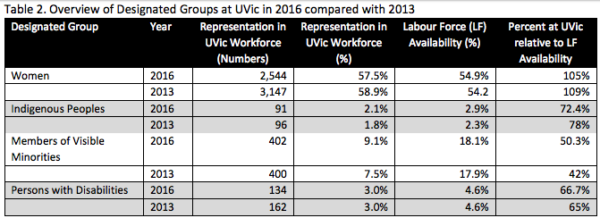A federal program will now factor institutional diversity into account when offering research grants to Canadian universities. The Canada Research Chair (CRC) program, which annually distributes $265-million among 1 600 researchers in the form of research grants, announced new measures on Thursday, May 4, that would require Canadian universities to come up with strategic plans to increase diversity among their candidates in order to earn federal funding.
Each postsecondary institution has until Dec. 15 of this year to propose a plan addressing diversity and equity concerns for four demographics — women, Indigenous peoples, persons with disabilities, and members of visible minorities. This measure, the program writes, will help ensure persons who self-identify within these categories have “access to new opportunities that will allow them to succeed in the sciences.”
After Dec. 15, 2017, postsecondary institutions will have 18 months to implement any diversity recommendations. After that, universities will make annual reports to the CRC and post results of their progress in meeting their equity and diversity goals. If they fail to meet the standards outlined by the CRC, a university will lose access to peer review and payments until all requirements are met.
In a statement, Minister of Science Kirsty Duncan wrote that the federal government was “committed to promoting equity and diversity within the sciences.”
“We need to work harder to ensure that talented researchers have the opportunity to advance,” Duncan wrote. “The announcement of the action plan is an important step towards a more inclusive, open and diverse research environment in Canada.”
The program requirement was recently addressed by UVic President Jamie Cassels, speaking at a university Senate meeting on May 5. At the meeting, Cassels mentioned that UVic won the inaugural CRC Equity Recognition in 2012 for, as per the university’s website, its “exemplary practices in recruiting Canada Research Chairs and exceeding its equity targets for chairholder representation from among women, visible minorities, and Aboriginal Peoples.”
UVic was awarded the same recognition in 2015, and was recently included among Canada’s Best Diversity Employers for the sixth year in a row. Cassels assured the Senate that UVic was meeting and exceeding its diversity targets.
“Diversity underpins excellence,” Cassels said.
In their 2016 annual report, the Equity and Human Rights (EQHR) Office broke down the number of UVic staff and faculty in the same four categories mentioned in the CRC’s measure (women, Indigenous peoples, members of visible minorities, persons with disabilities).

This table, based on data collected and analyzed by the UVic Office of Equity and Human Rights, shows how UVic measures up in terms of diversity in hiring practice for both faculty and staff. Table via UVic EQHR
The chart, which compares UVic’s staff and faculty in 2013 and 2016, shows that UVic hires at a rate below labour force availability — the percentage of candidates within a given demographic available for hire — for three of the four categories.
However given UVic’s successful track record with the CRC, and Cassels’ remarks at the Senate meeting, these numbers will most likely be good enough to keep the university eligible for the grant.
With files by Myles Sauer and Paige Bennett








